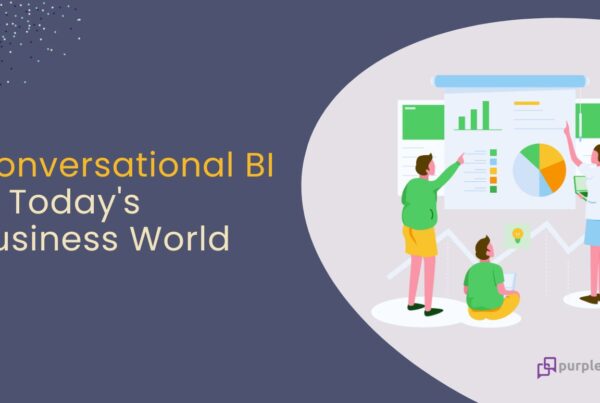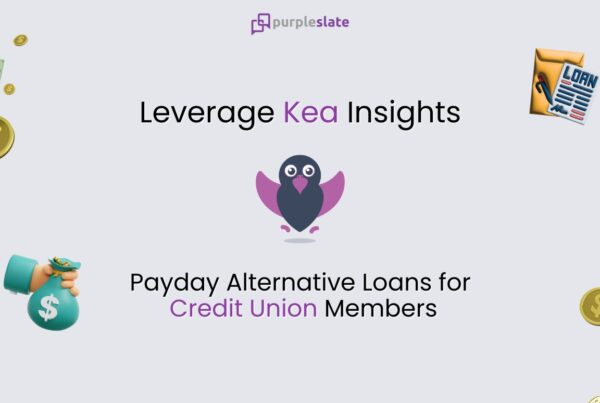
Introduction
We live in an era of information overload, and the average human attention span is less than that of a goldfish. It shouldn’t be a surprise when people miss key points when consuming a dashboard cluttered with too much information.
Today, people are busy handling multiple responsibilities and looking to add more value to their daily tasks. They don’t have time to look across multiple dashboards to make decisions; they simply want answers fast enough for their data questions and act on important information.
If people could just engage with their data directly, they could save themselves a lot of time and hassle. This is at the core of what we mean by Talk to your Data™ to improve your decision-making time.
How are businesses preparing for a future where decision intelligence plays a major role? What is the role of data in improving the speed of decision-making? The answers to these questions will help in understanding more about the tool that impacts decision-making.
The Vision for Big Data in Organizations
By 2025, nearly all employees naturally and regularly will leverage data to support their work – McKinsey
Data is set to rule the next few years in the world of business. Organizations will move further towards becoming data-driven. They will champion new initiatives and bring in innovative ways to derive meaningful insights from their data. There are four data touchpoints to explain the future of data practice in organizations.
Data Penetration
Organizations are actively expecting employees across all levels to improve their data literacy. They’re expected to reduce the time taken to solve problems by relying more on data practices, instead of investing time in traditional processes. Certain day-to-day activities including dashboard creation and manual data analytics will get automated. This will help them focus more on improving human skills such as data-driven decision-making, innovation, collaboration, and communication in their core domains.
Integrated & Flexible Data
Organizations are investing in different data stores like time-series databases, NoSQL databases, and data lakehouses. They will integrate the data stores into providing a single source of truth. These integrations help data scientists to understand the relationship between different data types more seamlessly thus leading to newer innovations in data. The future will be heavily influenced by 360-degree platforms providing complete views like the Customer 360 platform.
Real-Time Data Analytics
Many devices, especially the ones powered by IoT will be enabled to transmit data in real-time, thereby prompting analytics in real-time. The new Kappa and Lambda big data architectures ensure better data management, analytics, and processing all the while cloud computing prices are reducing. Real-time data capture and analytics will unlock a new era of powerful actionable insights.
Data Security Compliance
Growing concern over the world for data privacy and security has led to bills like General Data Protection Regulation (GDPR), and California Consumer Privacy Act being passed by various government bodies. Any organization storing and leveraging personal data will be under more scrutiny in the upcoming years.
The above touch points convey one important message:-
Organizations are on the lookout for a Conversational Insights platform that improves data access, breaks data silos, delivers real-time insights, and is secure by nature.
Improving data access, integrating data to become a single source of truth, and eliminating the laggards in data analysis have a direct impact on the timeliness of decisions. This is achieved by a solution that leverages natural language as an interface where you can converse with your data. It directly translates into reducing painful delays in decision-making.
Before we discuss conversational data analytics platforms, it’s important to understand more about how AI aids in improving decision-making time.
The Role of Artificial Intelligence in Data Analytics
Artificial intelligence has penetrated all frontiers, data analytics included. At the core of any digital transformation project sits three elements – People, Process, and, Technology. From the perspective of data analytics, artificial intelligence has had a significant impact on all three elements.
To demonstrate the power of AI in data analytics, consider the most recent catastrophe humans have gone through – the COVID-19 pandemic. How many of us know that AI-powered data analytics played a major role in battling the pandemic?
- People: Medical practitioners were given timely insights to better prepare for the pandemic variants
- Process: A proactive approach to curbing the spread ensured the slowing of the spread well ahead of its time
- Technology: Cutting-edge technology delivered insights in hours as opposed to the usual days and weeks to forecast the trend of spread saving precious time
AI techniques such as machine learning (ML), optimization, and natural language processing (NLP) provided vital insights and predictions about the spread of the virus and the effectiveness and impact of countermeasures – Gartner
Implementing AI-driven data analytics) platform saved valuable time in deriving insights and in turn, helped medical professionals make better decisions turning the tide of the pandemic.
AI (Artificial Intelligence) + BI (Business Intelligence) = CI (Conversational Insights)
Conversational Insights is the one place where artificial intelligence and business intelligence come together to fast-track business decisions. We have had many discussions about the definition of conversational insights, and why will it be the future of data analytics.
The reasons for investing in a conversational insights platform are endless. To summarize, we can say that it brings the best of both worlds together. From the perspective of improved decision-making, here is how CI helps information seekers.
Reduced Time to Insights
The time to derive insights has dropped significantly from weeks to just a matter of minutes. There is no need to prepare dashboards overloaded with information, instead ask data questions to which you need answers across channels
Intuitive Interface
The interface used in a conversational platform is the most intuitive one in the world. It’s something that all of us have used from a very young age and does not require any additional training. It’s the language you speak.
Improved Data Findability
Forget opening the report and scrolling through the pages to find the required insight. Humans always need momentary insights and Cl AI ensures that the answer to their data questions land in front of them thereby increasing the findability of data – a concept modern data users desire.
Interested to know more about conversational insights?
We have a story of how conversational insights helped a global commercial vehicle manufacturing company reduce its overall decision-making time by automating insights.




